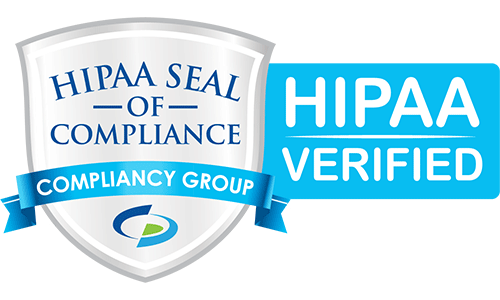How to Market a Physical Product Launch in the Health Industry
Are you launching a physical product in the health industry? Are you looking for ways to promote it and get the word out about your new offering? If so, then this blog post is for you! We’ll discuss some of the best strategies for marketing your physical product launch and how to get people excited about what you have to offer.
1. Identify Your Target Market
Identifying your target market is the first step in launching a successful product in the health industry. It’s important to understand who your potential customers are and what their needs and wants are. To do this, you should conduct market research, including surveys and interviews, to get a better understanding of the people you’re targeting. You should also consider demographic, geographic, psychographic, and behavioral data to further narrow down your target market. Additionally, you should analyze your competitors’ strategies to see what approaches they are taking to reach their target markets. This will give you valuable insights into the most effective ways to reach your own target market. With a clear understanding of who you’re targeting, you can begin to create a marketing plan that will effectively reach them.
2. Get Clear on Your Brand Messaging
When planning to launch a new product in the health industry, it is essential to ensure that you have a clear brand messaging strategy. You need to be able to communicate who you are, what makes your product unique, and why customers should choose you over competitors. Your messaging should be consistent across all of your marketing channels and should effectively capture your target audience. It is also important to create a unique selling proposition that clearly outlines the benefits of your product and how it can add value to the lives of customers. This will help you stand out from competitors and make it easier for potential customers to make an informed decision.
3. Establish Your Unique Selling Proposition
When it comes to marketing a physical product launch in the health industry, it’s essential to establish a unique selling proposition (USP). A USP is a statement that clearly and concisely explains why your product is different from the competition and why customers should choose your product over another. It should be tailored to the target audience and should be used to differentiate the product from others in the market. To create a compelling USP, identify the features of the product that will resonate with your target audience, focus on how it solves their problems, and highlight any unique benefits that customers can take advantage of. Your USP should be concise, memorable, and easily understandable. It should also be incorporated into all aspects of your marketing strategy for maximum impact.
4. Perform a SWOT Analysis
A SWOT Analysis is an essential tool for launching a physical product in the Health industry. It provides a structured approach to understanding the current condition of the product and its potential success. SWOT stands for Strengths, Weaknesses, Opportunities, and Threats. This process helps identify key areas that need to be addressed in order to ensure a successful product launch. By gathering factual data about the product, its competitors, and the market, an organization can use a SWOT Analysis to make informed decisions on how to best position their product for success. It also provides insight into strategies that can be used to reduce potential risks and increase the chances of success. A SWOT Analysis is an invaluable tool for any organization looking to launch a new physical product in the Health industry.
5. Develop an Effective Marketing Strategy
Developing an effective marketing strategy is critical to successfully launching a new physical product in the health industry. The marketing strategy should include the objectives and goals of the product launch, and outline how you plan to reach your target market. It should also include an analysis of your competitors’ products and how you can differentiate your own offering from theirs. Additionally, it should cover the channels you plan on using to promote your product, such as paid advertising, organic search engine optimization, email campaigns, influencer marketing, and social media. Finally, it should also outline how you plan to measure your success and track key performance indicators (KPIs). With an effective marketing strategy in place, you’ll be well-positioned to launch your product in a way that will maximize reach and engagement from your target audience.
6. Leverage Social Media Platforms to Reach Your Target Audience
Social media is a powerful tool for marketers looking to promote products in the health industry. Leveraging the right platforms and creating compelling content that resonates with your target audience can help you maximize your reach and engagement. When developing your social media strategy, make sure to consider factors such as user demographics, interests, and behaviors. Focus on creating content that speaks to your audience’s needs, and use visuals and videos to capture their attention. Additionally, you can use social media platforms to host giveaways and contests as a way to increase engagement. Incorporating creative visuals, educational content, and interactive elements into your social media strategy will help you build a strong presence on these platforms.
7. Utilize Influencer Marketing
When it comes to marketing a physical product launch in the health industry, utilizing influencer marketing can be an effective strategy. Influencers are people with a large following on social media or blogs who can help to promote your product. By leveraging their influence, you can reach your target audience and increase brand awareness through word-of-mouth marketing. When selecting influencers, be sure to choose ones that align with your brand values and have an engaged audience. To maximize engagement, you should create a comprehensive influencer outreach strategy that outlines the goals and objectives of the campaign. Through collaborations with influencers, you can gain valuable insights about your target market and create meaningful connections with potential customers.
8. Create a Compelling Product Launch Video
Creating a compelling product launch video is a great way to showcase your product and engage your audience. It should be short, informative, and visually appealing. Your video should explain your product’s features and benefits, offer a unique selling proposition, provide customer testimonials, and showcase the latest industry trends. Your video should also highlight the value that your product provides to customers, and create a sense of urgency to purchase. To ensure maximum impact, make sure your video is optimized for search engines, as well as shared on all relevant social media platforms.
9. Invest in Paid Advertising
In order to maximize the reach of your product launch, you should consider investing in paid advertising. Paid advertising can be an effective way to reach a wide audience quickly and efficiently. You can choose from a variety of platforms such as Google Ads, Facebook Ads, Instagram Ads, and LinkedIn Ads. Depending on your target audience and budget, you can create customized campaigns that will help you to reach your goals. Additionally, you should consider using retargeting campaigns to keep your brand top-of-mind and generate leads. With paid advertising, you will be able to measure your ROI and adjust your strategy accordingly.
10. Optimize Organic Search Engine Rankings
Search engine optimization (SEO) is an important strategy to consider when marketing a physical product launch in the health industry. SEO involves optimizing your website and content with strategically chosen keywords and phrases to improve visibility on search engine result pages. This can be a lengthy process, but it is essential for reaching a wider audience. Make sure to research and incorporate relevant keywords into your website and content, as well as make sure your website is up-to-date. Additionally, you should consider creating a blog or other content that is relevant to the health industry. This will help your site rank higher on SERPs and increase website traffic. Overall, SEO is a valuable tool when marketing a physical product launch in the health industry that can have long-term benefits for your brand.
11. Utilize Email Campaigns for Customer Engagement and Conversion
Email campaigns can be an effective way to reach customers and engage them in the product launch process. When customers receive emails about your product launch, it can create excitement and anticipation. You can also use emails to incentivize customers to purchase your product. Offer discounts, coupons, and other incentives to encourage conversions. You should also use email campaigns to provide customers with product updates and information. Make sure that the emails are well-crafted and optimized for mobile devices, as many customers will be reading them on their phones. Additionally, segmenting your customers based on their interests and needs can help you craft more effective emails and maximize conversions. By utilizing email campaigns for customer engagement and conversion, you can ensure that your product launch is successful.
12. Deploy Affiliate Marketing Programs
When it comes to marketing a physical product launch, one of the most effective ways to reach your target market is by deploying an affiliate marketing program. Affiliate marketing is a process in which you partner with influencers, bloggers, and other online personalities to promote your product. This type of marketing gives you access to a wide range of potential customers and can help you gain brand recognition and loyalty. By offering rewards such as discounts or free products, you can incentivize potential customers to buy your product and spread the word about it. Additionally, you can leverage the power of influencers to help you reach a larger audience and create content that will be shared across multiple platforms. By partnering with influencers and bloggers, you can gain valuable insights into customer behavior and preferences which can help you refine your product launch strategy.
13. Host Webinars with Promotional Lead Magnets
Hosting webinars with promotional lead magnets is an effective way to attract new subscribers and build a brand's expertise. According to Adobe Connect, Thursday is the best day to host webinars as 91% of webinars are held on that day. The key to generating quality leads is creating lead magnets, which are incentives such as checklists, guides or discount codes. Hosting webinars and using lead magnets helps increase the visibility of your brand and provides value to your customers. It is important to understand customer pain points and create a free offer that will attract them to sign up for your webinar. Periodically offering free gifts such as e-books or templates as part of the lead magnet strategy helps to bring in new interested customers.
14. Take Advantage of Offline Events
Organizing an offline event can be an effective way to reach your target market, allowing you to showcase your product in the flesh. Offline events provide a space for people to connect with each other and with your brand, fostering engagement and relationships. You can host product launch parties, seminars, and workshops to demonstrate your product’s features and benefits. This is a great way to spread awareness about your product, build relationships with potential customers, and generate leads. Additionally, it can help to create a buzz around the launch, which can translate into more sales down the line. Be sure to take advantage of offline events—they can be the perfect platform to launch your product in the health industry.
15. Build Strategic Partnerships with Other Brands in the Industry
If you're looking to market a physical product launch in the health industry, one of the most effective strategies is to build strategic partnerships with other brands in the industry. Partnering with other brands gives you access to their customer base and helps to amplify your reach. Plus, it enables you to leverage each other's strengths and resources in order to create a more comprehensive and effective product launch program.
When looking for partners, it's important to keep in mind your target audience and the type of products that they would be interested in. You should also consider the level of trust that potential partners have with their customers, as well as how their reputation can benefit your brand. Additionally, it's important to look for partners that have the same level of commitment to quality and customer service as your own company.
Once you've identified potential partners, it's important to create a mutually beneficial agreement. This means outlining the goals and responsibilities of both parties, as well as determining how each partner will benefit from the partnership. Additionally, it's important to set clear expectations for customer service and communication so that both parties are on the same page. Lastly, it's essential to review any legal documents related to the partnership before signing off on it.
By building strategic partnerships with other brands in the health industry, you will be able to tap into a wider customer base, gain access to more resources, and ultimately increase the success of your product launch.
16. Analyze Competitor Strategies and Adapt Accordingly
In order to ensure the success of your physical product launch in the health industry, it is important to analyze your competitors’ strategies and adapt accordingly. Take time to research and understand your competitors’ strategies and tactics. This information can be used to develop your own marketing strategies and help you identify opportunities to stand out from the crowd. Analyzing competitor strategies can also help you identify gaps in the market that you can fill with your own product launch. Researching competitor tactics can also help you understand their pricing structure and how they are marketing their products. You can use this information to develop your own pricing structure and create targeted marketing campaigns that appeal to your target audience. By taking the time to analyze competitor strategies and adapt accordingly, you can ensure the success of your physical product launch in the health industry.
Conclusion
It is essential to make sure that you have a well-thought-out plan for launching your physical product in the health industry. You need to create a marketing strategy that is tailored to your target market, establish a unique selling proposition, develop compelling content, and leverage the right channels to reach the right people. Moreover, you should analyze the strategies of your competitors and make adjustments accordingly. With the right approach and dedication, you can be sure to have a successful product launch.
Clinician Box understands the needs of pharmaceutical and medical device companies and businesses in the healthcare industry. We offer a multitude of digital marketing services making sure every detail of your marketing strategy works for you. Schedule a consultation with us or contact us for a free strategy meeting.















